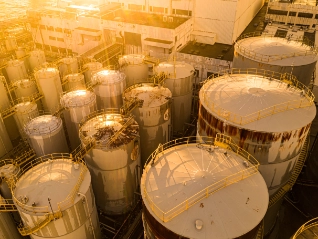
Ultime notizie e approfondimenti

Rapporti e pubblicazioni dei nostri esperti di settore

Guide utili a portata di mano

Esempi di buone pratiche di gestione del credito in vari settori e mercati

Storie di successo dei nostri clienti
Lo stallo politico e l'aumento del debito in Francia rischiano di minare la stabilità dell'eurozona e la fiducia delle imprese


L'Organizzazione di cooperazione di Shanghai ha presentato una visione politico-economica alternativa per il mondo, ma...

Il presidente ha promesso il ritorno di milioni di posti di lavoro nelle fabbriche, ma l'aumento degli impegni di investimento nasconde...

100 anni di gestione del rischio, acquisizione di conoscenze e creazione di fiducia

Sebbene l'accordo porti un po' di sollievo, i dettagli irrisolti e gli obiettivi...

Legami più stretti potrebbero stimolare il commercio e creare un'alternativa funzionante all'inefficace OMC. Ma senza il...

Atradius Syndicate 1864 will focus on trade credit risks, initially targeting new and existing European...
Visualizzazione 7 fuori da 53
Le aziende farmaceutiche di tutto il mondo stanno rivedendo le loro strategie operative e...


La crescita della produzione chimica dovrebbe rallentare nel 2025/2026 a causa dei dazi statunitensi

Le tensioni commerciali provocano un aumento dei casi di insolvenza

La risposta delle imprese statunitensi al cambiamento delle politiche commerciali

Alla ricerca di approdi sicuri in una regione divisa

Le tariffe e la relativa incertezza causano un forte impatto negativo

In alcuni mercati l'impatto indiretto dei dazi potrebbe frenare l'aumento della spesa alimentare.
Visualizzazione 7 fuori da 71
Questa guida illustra i passaggi fondamentali per rafforzare la gestione del credito, ridurre i rischi e proteggere il flusso...


In un'economia globale interconnessa e volatile, il calo delle esportazioni è più di una semplice...

Le instabilità globali possono avere un forte impatto sul flusso di cassa. L'assicurazione del credito aiuta le aziende a rimanere...

Molte aziende sottovalutano il reale impatto della valutazione del rischio di credito dell'acquirente. Questa svista può erodere...

La pianificazione della resilienza può fare la differenza tra la crescita...

La cambiale ha plasmato il commercio globale per secoli. Sebbene funzioni bene per garantire la...

Quando si parla di assicurazione del credito commerciale, spesso la...
Visualizzazione 7 fuori da 25
Every customer is a potential risk. The larger and more solvent they are, the greater the risk. In January 2023, Brazil...


Atradius Surety has enabled Vinci Construction France to expand their sources of finance beyond their banking...


With the backing of Atradius’s resources, EnCom Polymers has been able to expand business with existing customers and go...

BVV GmbH grew internationally and recognised risks such as companies on the brink of insolvency in plenty of time to mitigate the...

Omron has achieved sustainable growth while navigating the uncertainties of China-US trade relations and regional manufacturing transformation.


FERM (International) offers competitive payment terms and limits their credit risk to developing countries by using Atradius Dutch State Business (DSB) and...

El Ganso credits our support in helping the fashion brand grow from a domestic-focused Spanish startup to a successful international business.

By providing open dialogue, insight and valuable credit information we helped Brook Green Supply improve their internal credit...

Late payers prompted content marketing agency KMOdynamoo to take out an Atradius credit insurance policy and has resulted in better debtor management.

Our agility and local knowledge of worldwide markets and buyers are key reasons why textiles business Georg Jensen Damask say they collaborate...

Janson Bridging (International) uses export credit insurance from Atradius Dutch State Business (DSB) to offer favourable credit terms to customers...
































